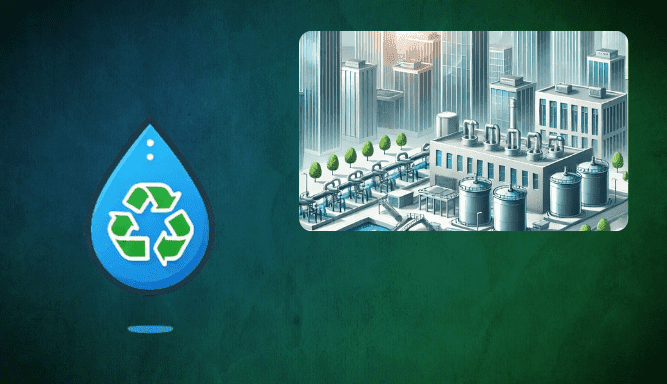Introduction
The selection of an appropriate wastewater treatment system has become increasingly crucial in our modern world. As environmental concerns grow and regulations tighten, businesses and municipalities must carefully consider their options. This blog post will examine four popular wastewater treatment systems: Sequencing Batch Reactor (SBR), Moving Bed Biofilm Reactor (MBBR), Membrane Bioreactor (MBR), and Pre-Fabricated EasySTP. Our goal is to provide you with the information necessary to make an informed decision when choosing a wastewater treatment solution
What is a Wastewater Treatment System?
A wastewater treatment system is a series of processes designed to remove contaminants from water that has been used in homes, industries, or other facilities. These systems play a vital role in protecting public health and the environment by ensuring that water released back into the ecosystem is clean and safe.
Selecting the right wastewater treatment system is critical, as it directly impacts the efficiency of the treatment process, operational costs, and environmental outcomes. Key factors to consider when choosing a system include:
Treatment capacity
Initial and ongoing costs
Maintenance requirements
Environmental impact
Overview of the Systems
Sequencing Batch Reactor (SBR)
SBR systems operate on a time-based cycle, treating wastewater in batches. This process involves filling a tank with wastewater, treating it, and then discharging the treated water. SBRs are widely used in both municipal and industrial applications due to their flexibility and ability to handle varying wastewater loads.
Moving Bed Biofilm Reactor (MBBR)
MBBR technology uses floating media within the reactor to provide a surface for biofilm growth. This biological treatment method is particularly effective for upgrading existing plants or in situations where space is limited. The MBBR process can achieve high treatment efficiency in a compact footprint.
Membrane Bioreactor (MBR)
MBR systems combine biological treatment with membrane filtration. This advanced technology produces high-quality treated water suitable for reuse applications. MBRs are known for their excellent effluent quality and ability to operate at higher biomass concentrations compared to conventional systems.
Pre-Fabricated EasySTP
EasySTP is a compact, pre-fabricated wastewater treatment solution designed for small to medium-scale applications. This plug-and-play system offers a cost-effective and low-maintenance option for modern wastewater treatment needs. Its pre-fabricated nature allows for quick installation and minimal on-site construction.
Key Comparisons: Features and Benefits
Efficiency and Performance
SBR: Offers good organic and nutrient removal capabilities. Adaptable to varying wastewater loads.
MBBR: Provides high treatment efficiency in a compact space. Effective for both organic and nutrient removal.
MBR: Delivers superior effluent quality, particularly suitable for water reuse applications.
EasySTP: Offers reliable performance for small to medium-scale operations with consistent wastewater characteristics.
Space Requirements
SBR and MBR systems typically require larger footprints compared to MBBR and EasySTP.
MBBR and EasySTP are more compact, making them suitable for sites with limited land availability.
Ease of Installation and Maintenance
EasySTP stands out for its pre-fabricated design, allowing for quick and straightforward installation.
MBR systems often require more specialized maintenance due to their membrane components.
SBR and MBBR systems generally have moderate maintenance requirements.
Cost Considerations
Initial setup costs are typically higher for MBR systems due to the membrane technology.
SBR and MBBR systems have moderate initial costs but may require larger tanks or reactors.
EasySTP often presents a cost-effective solution for smaller applications, with lower initial and operational costs.
Environmental Impact
All four systems can achieve high treatment standards, minimizing environmental impact.
MBR systems often have the highest energy consumption due to membrane operation.
EasySTP and MBBR systems can be designed for energy efficiency, potentially reducing the carbon footprint.
When to Choose Each System?
SBR: Best suited for applications requiring flexibility in handling varying wastewater loads and where batch operation is preferred.
MBBR: Ideal for upgrading existing treatment plants or when space is limited but high treatment efficiency is required.
MBR: The top choice when the highest quality effluent is needed, particularly for water reuse applications.
EasySTP: Optimal for small to medium-scale applications requiring quick setup and minimal maintenance.
Advantages of Pre-Fabricated EasySTP
EasySTP offers several unique benefits:
Its plug-and-play design simplifies installation and commissioning.
The system is cost-effective for small to medium-scale applications.
It has a minimal footprint, making it suitable for space-constrained sites.
EasySTP incorporates modern, eco-friendly approaches to wastewater treatment.
Conclusion
The choice between SBR, MBBR, MBR, and EasySTP depends on your specific needs, site constraints, and treatment goals. Each system has its strengths: SBR offers flexibility, MBBR provides efficiency in a compact footprint, MBR delivers superior effluent quality, and EasySTP offers a user-friendly, cost-effective solution for smaller applications.
Consider your wastewater characteristics, available space, budget, and treatment objectives carefully when making your decision. For those seeking an innovative, efficient, and sustainable solution, especially for small to medium-scale operations, exploring options like EasySTP could lead to significant benefits in both performance and cost-effectiveness.






